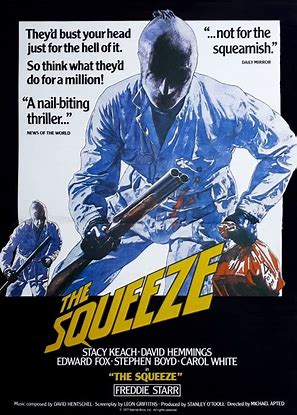Claude Chabrol’s adaptation of Ellery
Queen’s Ten Days Wonder jettisons the detective character, repurposing
the material as a fabulous meeting of cinematic universes: the opening scene,
with Anthony Perkins’ character Charles waking up covered in blood in a
mysterious hotel room clearly evokes Psycho, and the casting of Orson
Welles as his enormously wealthy father Theo deepens the sense of a work drawing on Hollywood myth and shadow; in contrast, the other two principals, Marlene
Jobert and Michel Piccoli, are firmly rooted in then-current French cinema. For
once cast in something more than a cameo, Welles has a field day as Theo, a man
whose desire for control is so great that life inside his enormous mansion (to
which Piccoli’s character Paul accompanies Charles, hoping to aid his healing)
exists as if stuck in his favourite year of 1925, with his family and staff
dressing accordingly, living by the commensurate technological limitations and
so on; his much younger wife (Jobert at her most fragile) originally came to
live with him as a child, adding an element of murky sexuality. The denouement
pushes the premise yet further, first to posit that Charles has essentially
viewed Theo as being God, and then suggesting rather that the identification
was Theo’s own; Welles’ theatrical gravitas (his fake nose often prominent)
continually blurs the line between the scene-shaping will of the actor and that
of the character. The film is most alluring and satisfying when at its most
happily inventive, unveiling lurid secrets, unseen threats and inexplicable
actions; the final explanation and accounting lands in rather hollow fashion. Not
uncommonly, the fact of half the principals being dubbed (although it's a different half, depending on whether you watch the English- or the French-language version) introduces a sense of distance and artificiality; in this case though,
that often seems to work for the better, emphasizing the conscious
other-worldliness of events.




